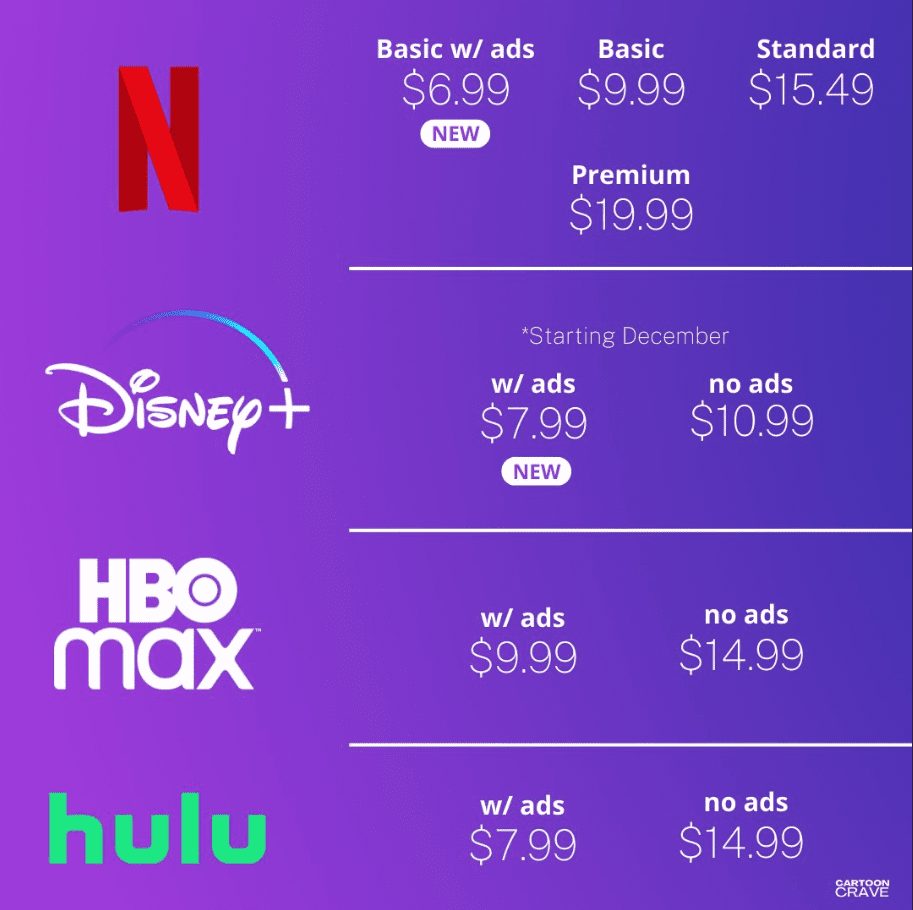The content streaming wars are heating up again, and Netflix is upping the ante for its competitors. The California-based streaming giant has attached a price point of $6.99 to its ad-based service, undercutting its rivals, including Disney+ and Hulu, which have subscriptions selling for a dollar more.
In the current economy, as CEOs across corporate America have sounded alarms of recession, the lower-priced content steaming plan could be a hit. Consumers have propped up the economy with their spending, but prolonged high inflation could throw a wrench into the trend.
After experiencing a flood of new subscribers during the pandemic when restrictions prevented viewers from visiting the movie theater, Netflix has seen its user numbers trail off. The company’s foray into ad-based content could increase its subscriber numbers and result in fewer cancellations, which could help buoy revenues.
The move represents a pivot from Netflix’s usual model, which historically tends to avoid ad-based and lower-tier price plans.
Netflix’s shift to a lower-priced model comes after the company saw its subscriber numbers stagnate, which has been weighing on its performance this year. In the first half of 2022, they lost subscribers, while in the third quarter, they managed to add 1 million users.
With over 220 million subscribers, Netflix remains the king of the hill, but the competitive landscape is only heating up.
Disney+ and Hulu, whose plans also rely on ads, both advertise monthly subscription rates of $7.99 starting in December, when Disney+ will introduce its latest commercial-tier package. Meanwhile, HBO Max’s commercial-based plan will run users $9.99 each month.

Image by Cartoon Crave on Twitter
Netflix’s new package, dubbed “Basic with Ads,” is the company’s debut advertiser-based tier and will roll out nationwide on November 3.
Users will experience up to five minutes of commercials for every hour of streaming content they watch. Each commercial will last for 15-30 seconds, less than what they would see viewing traditional TV.
By submitting personal information, such as birthdate and gender, viewers will see ads tailored to them. However, due to licensing restrictions, they will have access to a limited library of content and will not be able to download films or television series.
As for advertisers, they will have a say in the content on which their commercials will run and can object to any shows they find inappropriate.
Nielsen ratings, which measure audiences on U.S. television programming, will gauge the advertisements’ reach through its digital ad rating tool starting early next year. Netflix has avoided having to unveil detailed data about its viewership, but moving into ad territory opens it up to Nielsen’s service.
Greg Kahn, an ad industry alum who these days has his own media advisory firm, suggested to Reuters that Netflix subscribers could downgrade from higher-priced zero-ad plans to the lower-priced commercial-based service.
For users who do not have the patience for ads, Netflix continues to offer its commercial-free plans starting at $9.99 per month.


